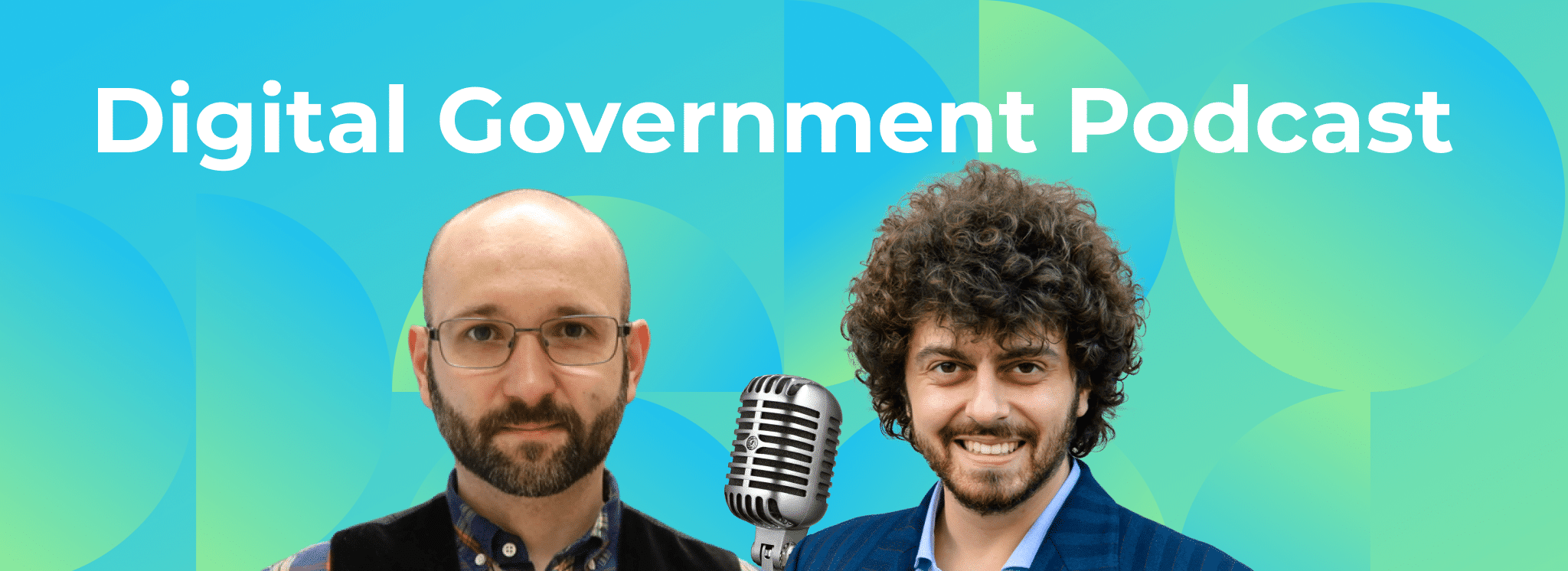
Podcast 🎧 & blog: Latest trends in digital participation and civic engagement
The newly formed Competence Centre of e-Governance Academy on Governance and Engagement already has a track record of matching active citizenship with institutional dialogue, bringing citizens and administrations closer together.
But let’s zoom out for a moment. We have worked on improving the relationship between public service providers and users in Georgia, Ukraine, and many other countries worldwide. In what context and which direction, though, these developments took place more at large?
Dmytro Khutkyy, Expert at the Competence Centre and Research Fellow in Digital Governance at the University of Tartu, joins this podcast episode to do just that – draw the bigger picture, on latest trends in digital participation and civic engagement.
Changing trends in civic digital participation
Over the past decade, significant changes have occurred in the realm of civic digital participation. As Khutkyy notes, people are shifting from classic web-based platforms to social media for participation. While governments used to create dedicated participation platforms, citizens are now directly engaging with decision makers through more informal. “People use social media on an everyday basis, so sometimes they just reach politicians directly. This creates buzz around certain issues, and politicians take them into account,” he explains.
Another notable trend is the integration of artificial intelligence (AI) into civic engagement. Municipal authorities and governments are starting to use AI tools to analyze popular sentiment and trends among citizens. AI can help structure and categorize these sentiments, providing valuable insights for policymakers. While this AI-driven approach is still in its infancy, it certainly holds great potential for the future of digital participation.
The relationship between democracy and participation
But we can’t talk about digital engagement without focusing on the connection between democracy and civic participation, too. The level of participation can vary significantly depending on a country’s political context and regional factors. However, Khutkyy points out, some tools already worked better than others in getting citizens involved. Participatory budgeting has proven to be a powerful tool for local communities to influence policymaking, for example. “Participatory budgeting empowers citizens by involving them in the entire policymaking process, from generating ideas to monitoring and overseeing the results,” he says. And this inclusive approach strengthens democracy at the local level.
Additionally, citizen assemblies make the chart as well, as a format of participation that has gained traction at the national or EU level. These assemblies allow citizens to deliberate and contribute to policymaking. Khutkyy believes that this format, when implemented effectively, can lead to substantial policy improvements and better democratic representation.
Outstanding examples of digital participation
Moving to digital development, we focus on another indicator that does interact with participation, in order to understand the potential for increased civic engagement through digital tools. When it comes to public discussions, the requirements in that sense are minimal, as even in less digitally advanced countries people can communicate through smartphones and social media. However, for more high-stake endeavours like Internet voting in elections, a higher level of digital development is essential to ensure security and trust in the process.
Estonia, notably, stands as an example: a country that has successfully combined digital development with participation. So Estonia’s solid digital infrastructure, characterized by trust and security, has allowed for the expansion of digital civic engagement in that direction too. But as Khutkyy suggests, building trust, transparency, and cooperation between governments and citizens are key elements in enhancing participation.
But one of the best practices Khutkyy brings up is the Irish Citizen Assembly too. He describes this innovative approach that combines multiple democratic formats to discuss policies, reach consensus, and ensure legitimacy. The process involves online crowdsourcing of ideas, randomly selecting a representative sample of citizens, deliberating with expert input, and presenting policy proposals to the parliament. Ultimately, a referendum and parliamentary approval solidify the decisions made.
The Irish Citizen Assembly serves as an ideal model for inclusive and effective civic participation, promoting transparency and trust in the policymaking process. It showcases the potential of combining various participation methods to achieve robust democratic outcomes.
Recommendations for governments
So how can governments get there, simply put. According to Khutkyy, there are definitely a few things governments could do to enhance civic participation and dialogue:
- Genuine Transparency
Governments should prioritize transparency in their actions and decision-making processes, building trust through openness. - Cooperation
Governments should actively engage with civil society and the public, working together to address challenges and opportunities. - Inclusive Participation
Ensure that everyone has the opportunity to participate in civic activities and decision-making processes. Empower citizens to have an impact on their communities. - Common Goals
Identify common goals that unite people, whether it’s policy reform, economic development, or other objectives. Collaborative efforts create a positive cycle of engagement. - Digital Development
Invest in digital infrastructure while upholding cybersecurity and privacy standards. Ensure that digital tools support, rather than hinder, democratic processes.
In an evolving digital landscape, governments must adapt to the changing dynamics of civic participation. By embracing transparency, cooperation, and inclusivity, they can foster a stronger democracy where citizens actively engage in shaping their future.
















